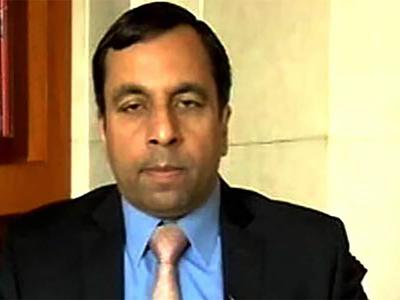Donald Trump seeks to activate his base at Moms for Liberty gathering but risks alienating moderate voters
Republican presidential nominee Donald Trump is set to speak at the Moms for Liberty annual gathering, promoting education policies like school choice and parental control. He aims to solidify his conservative base but risks alienating moderates. The group's influence has waned due to recent scandals and underwhelming electoral performance. The event comes as Trump continues his broader electoral campaign, including a rally in Pennsylvania.
US Presidential Polls: The U.S. presidential election involves primaries and caucuses, two distinct methods for selecting nominees. Primaries are managed by state governments and use secret ballots, while caucuses are run by political parties and involve public discussions and voting. States have various rules for these processes, and recent controversies have led to voter confusion. Understanding these methods is crucial for informed participation in the electoral process.
US Presidential Election Race: The US Supreme Court's decision overturning Roe v. Wade and delegating abortion regulation to states has become a pivotal issue in the presidential campaign. Kamala Harris criticizes Trump for his role in this change, while Trump attempts to appease female voters by moderating his stance on bans and committing to subsidize IVF treatment and newborn care expenses.
- US Elections campaign hots up as Kamala Harris cocks a snook after Trump hints at cancelling September debate
- Next question, please: Kamala Harris dismisses Donald Trump's racial attacks
- Will Arlington cemetery incident become Donald Trump's political graveyard?
- Trump launches digital trading cards featuring himself to raise funds, invites major social media ridicule
How America Elects Its President
Caucus vs. Primary: Which method impacts your vote and how?
US Presidential Polls: The U.S. presidential election involves primaries and caucuses, two distinct methods for selecting nominees. Primaries are managed by state governments and use secret ballots, while caucuses are run by political parties and involve public discussions and voting. States have various rules for these processes, and recent controversies have led to voter confusion. Understanding these methods is crucial for informed participation in the electoral process.
US Elections 101: 20 things you should absolutely know
Absentee voting allows those unable to attend polling stations to vote by mail. Key election terms include battleground states, which are highly competitive, and the Electoral College, where 270 electoral votes are needed to win. Super Tuesday is a significant date when numerous states hold their primaries.
How many times can one run for the White House?
In the US, the 22nd Amendment limits presidents to two elected four-year terms, though a president could serve up to ten years if they assume office through succession. Franklin Roosevelt is the only president to have served more than two terms, having been elected four times before the amendment was enacted in 1951.
How did blue become Democrat and red Republican?
US Presidential Elections 2024: The association of red with Republicans and blue with Democrats in the United States solidified during the 2000 presidential election, driven by media consistency during the Bush-Gore recount. This modern color symbolism, now deeply embedded in U.S. political identity, contrasts with international norms where red typically signifies left-wing parties. Historically, U.S. political color use was inconsistent, with the 2000 election marking a turning point in establishing today's widely recognized party colors.
The winner on Election Day may not be the next President
The U.S. presidential election process does not conclude on Election Day. Votes are cast, and states certify results over weeks. Recounts can occur, and the Electoral College meets to vote. Congress counts and certifies these votes, finalizing the outcome by January 6. Legal challenges may arise, but the official result is confirmed by Inauguration Day.
How is the American president elected?
Unlike in many other countries, the US president and vice president are not directly elected by citizens. Instead, they are chosen by "electors" through an "Electoral College". In this system, it is possible for a candidate to win the popular vote and still lose out on the presidency.
Who can become a US president?
To serve as president, one must be a natural born citizen of the United States, a resident for 14 years, and 35 years of age or older.
How many times can one run for the White House?
The Presidency is limited to two four-year terms after the 22nd Amendment to the Constitution, ratified in 1951. Before that, a President could serve an unlimited number of terms. For example, Franklin Roosevelt was elected four times and served from 1932 to 1945.
How much money does it take to elect a US president?
Campaigning is expensive business. The main reason it costs so much is because it lasts so long. There's also no limit on how much a candidate can spend. Costs can run up to even $1 billion — and that's not even counting outside spending.
Are there only two parties in American politics?
The Democratic Party and the Republican Party dominate modern politics in the United States. Every United States presidential election has been won by either of these two parties since 1852. They have also controlled the United States Congress to some extent since at least since 1856.
What are caucuses and primaries?
States have two ways of collecting votes when choosing a presidential candidate — primaries and caucuses.A primary is what most people usually think of when they imagine voting — people showing up at a polling place to vote for their candidate by ballot.A caucus is different. It's an event that requires hours of active communal participation and debate.
What happens if there's a tie?
In the event of a tie in the selection of the president, the vice president-elect serves as acting president until the deadlock is resolved. In other words, the House has to keep voting until the tie is broken.
Can Donald Trump postpone this election?
According to the Congressional Research Service, “under the Twentieth Amendment, the incumbent President’s term ends at noon on January 20th. There are no provisions of law permitting a President to stay in office after this date, even in the event of a national emergency, short of the ratification of a new constitutional amendment.”
What is the electoral college and how does it work?
Eligible US voters on election day don’t pick the President directly. They are voting for 538 electors instead, who meet in their respective states and vote for President and Vice President. The number is 538 as there are 100 senators (2 per state) and 438 representatives (distributed by population). These electors comprise the Electoral College.
Large states, which have an electorate split relatively evenly between Democrats and Republicans, are called a Swing state. The outcome of voting in these states is difficult to predict.Swing states are also called battleground states or purple states. Traditional battleground states include Florida, Ohio and Pennsylvania.
NRI News
World News
Markets Impact
- Here’s what a Biden victory means for the Federal Reserve

- India can expect a coherent anti-China front with Biden in power

- What’s ahead under President Joe Biden, industry by industry

- High-flying US tech stocks get post-election lift, near new highs

- Investors celebrate Joe Biden winning US presidency

- Marc Faber says Biden win more positive for market

- Dow Jones jumps 200 points at open as Blue Wave risks fade

- Emerging market stocks rally to highest since 2018 on Biden lead














 After selloff, there’s new opportunity in 4 sectors: Ajay Srivastava
After selloff, there’s new opportunity in 4 sectors: Ajay Srivastava